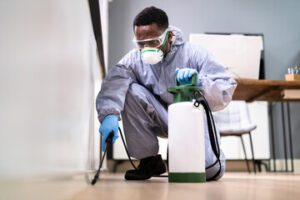When it comes to a recession-proof career, plumbing is one of the top choices. Plumbers are essential to ensuring water supply, proper drainage, and safe waste disposal in homes and businesses.

Septic systems consist of tanks and drainfields that treat wastewater by separating solids from liquids and gases. The resulting sludge is removed from the system and treated to reduce odors and disease. Visit Our Website for more details.
Plumbing systems provide potable water for drinking and other uses, as well as remove wastewater. They are a vital part of any home or building and must be properly maintained to prevent contamination. A good plumber can help you keep your plumbing system in top shape and avoid costly repairs. A plumbing inspection can identify problems and ensure that your pipes are safe to use.
A plumbing system consists of pipes, fixtures, and appliances that transport water and waste throughout the building. The system also provides heating, ventilation, and air conditioning services. Depending on the type of plumbing, it may include drainage and sewer systems, fire sprinklers, or gas pipes.
Premise plumbing consists of the pipes that supply drinking water to residential or commercial buildings and homes. This type of piping typically includes a water meter, pressure regulator, and main shut-off valve. Premise plumbing is the responsibility of the building owner. Premise plumbing is often made of copper, which is favored for its longevity and resistance to corrosion. It is also available in plastic versions such as polypropylene, high-density polyethylene (HDPE), and crosslinked polyethylene of raised temperature (PEX).
Water distribution pipes are located inside the building and carry potable water to the fixtures. These pipes are normally insulated and designed to operate at a maximum of 80 psi. They should be constructed from materials that resist corrosion, do not leak, and do not contaminate the potable water. They should be inspected regularly for corrosion and leaks.
Drainage and sewage systems remove waste from restrooms and kitchens. These systems include a network of pipes and pumps that connect to the municipal sewer system or private septic tank. Venting systems include a network of pipes that carry exhaust from furnaces and other appliances.
Process piping moves gases, chemicals, water, and other liquids from one place to another in industrial and manufacturing processes. These piping systems must be designed to meet the specific needs of each facility and comply with local codes and regulations. Regular inspections and maintenance can prevent problems, such as clogs and leaks, that can lead to costly repairs.
It involves the removal of waste
Plumbing includes the pipes and fixtures that bring fresh water into buildings and remove wastewater. It also involves the repair and maintenance of these systems to ensure safe and sanitary conditions in a building. It is a complex and important system that affects every part of a home or business. Understanding how plumbing works can help you avoid common problems and save money.
The main components of a plumbing system are pipes, fixtures, and appliances that deliver clean water, remove waste, and control the flow of water. The pipes are made from a variety of materials, including copper, steel, PVC, and PEX. The pipes are designed to withstand various environmental factors, and they connect the fixtures and appliances in a building to the sewer line or septic tank. The fixtures and appliances include faucets, toilets, showers, sinks, dishwashers, and more. The appliances may be heated by a water heater, and they often utilize smart technology to monitor and control usage.
A plumbing system is essential for safe and healthy living, and it requires regular maintenance to prevent costly repairs. However, even the most well-maintained plumbing systems can experience hiccups. Understanding what causes these problems can help you fix them quickly and efficiently. Common problems include leaking faucets, toilets that run constantly, and slow draining sinks or tubs. These problems can be caused by a variety of issues, from worn-out washers to broken seals and valves.
Another common problem is a clogged drain or pipe. This can be caused by hair, soap scum, food particles, and other debris that accumulate in the pipes. A clogged drain can lead to flooding, water damage, and expensive repairs.
A plumber can fix these problems by using a snake to break up the blockage and draining the pipe. However, if the blockage is severe, a plumber may need to dig up and replace the affected section of the pipe.
Plumbing and piping systems serve different functions, but they are both essential for a building’s health and safety. While plumbing systems deliver water and waste, piping systems transport gases, chemicals, and other fluids throughout a building’s facilities.
It is regulated by the International Plumbing Code (IPC)
The International Plumbing Code (IPC) sets standards for the design, installation, and maintenance of plumbing systems in residential, multi-family, commercial, and industrial buildings. It protects public health and safety by ensuring that water supplies meet minimum sanitation standards, and that wastewater is properly discharged. It also provides guidelines for backflow prevention and the use of innovative piping materials to address modern plumbing challenges.
The IPC includes provisions for potable water distribution, water heaters, anti-scalding devices, backflow prevention methods, sanitary drainage and venting, and storm drainage. It also addresses other issues that impact the integrity of plumbing systems, such as water pipe sizing and design.
Compliance with IPC is mandatory in many jurisdictions, so it’s important for plumbers to understand the code and its requirements. In addition, plumbers must be aware of how to apply the IPC to real-world scenarios. This will help them prevent pitfalls such as overflows and leaks. It’s also advisable to keep up with the latest changes in IPC regulations, as they can impact the safety and reliability of plumbing systems.
A thorough understanding of the IPC can help plumbers develop effective and reliable solutions for their clients. For example, the IPC has recently adopted new rules for plumbing fixture load calculations, which improve accuracy and reduce the risk of system overloads. It has also updated rules regarding backflow protection, reducing the risk of contamination from backflow. It has also expanded the list of approved piping materials, including innovative technologies like cross-linked polyethylene (PEX).
In addition to improving efficiency and reducing leakage, IPC changes can help plumbers save on construction costs. While IPC rules may not reduce upfront construction costs, they can lower long-term operating and energy costs by promoting water conservation and energy efficiency.
Despite these benefits, some people are opposed to the IPC. Some argue that it’s not cost-effective and does not promote sustainability, while others point out that adherence to the IPC is required for a safe and healthy home or business. In order to avoid a monopoly by one single group, the IPC is developed through a consensus process with representatives from every major industry.
It is a skilled trade
Plumbing is a skilled trade that requires an in-depth knowledge of the physical properties of pipes, fittings, and fixtures. In addition, plumbers must have excellent analytical skills to identify and resolve problems. They must also understand the national plumbing codes and standards. They may work on projects involving residential, commercial, and industrial facilities. Plumbers often work with other professionals, such as architects and construction teams, to ensure that their systems are integrated seamlessly into building projects and meet all applicable regulations.
Plumbers are also required to keep up with new technologies and equipment, as well as attend regular training sessions to refresh their skills. This is important, as it ensures that they can handle a variety of different jobs and situations. In addition, plumbers need to be reliable and dependable, and they should always strive to achieve the best results for their clients.
Plumbers play a vital role in our daily lives, and they need to be knowledgeable about the latest tools and techniques. In addition, they must be able to solve complex problems quickly. The job of a plumber is also very rewarding, as it allows them to make a difference in people’s lives. Plumbers can help protect the environment and reduce water waste by ensuring that the plumbing system is functioning properly.
Moreover, plumbers have a unique skill set that sets them apart from other types of professionals. They can help prevent costly repairs by detecting and fixing leaks before they cause serious damage. In addition, they can help save money by installing energy-efficient appliances and fixtures. This can also lead to a more comfortable home.
Another reason why plumbing is considered a recession-proof career is that it’s essential for every household. Without functioning plumbing, homes and businesses would suffer from many problems, including burst pipes and clogged drains. These issues need to be resolved immediately, which is why plumbers are in high demand during economic downturns.
As a result, plumbing is a great career choice for those who want to work with their hands. In addition, this field offers a flexible work schedule and the opportunity to earn more by pursuing specialized careers, such as gas line installation or sewer systems. Additionally, plumbers can choose to become master plumbers and enjoy the benefits of having their own business.



